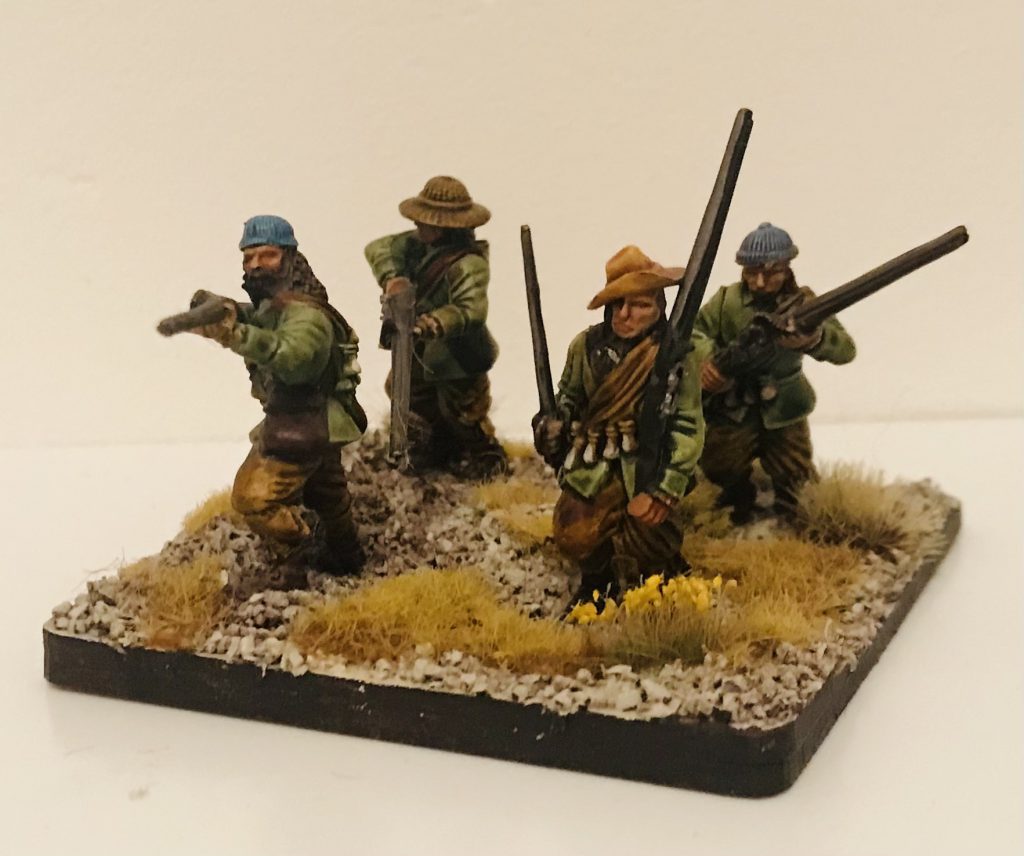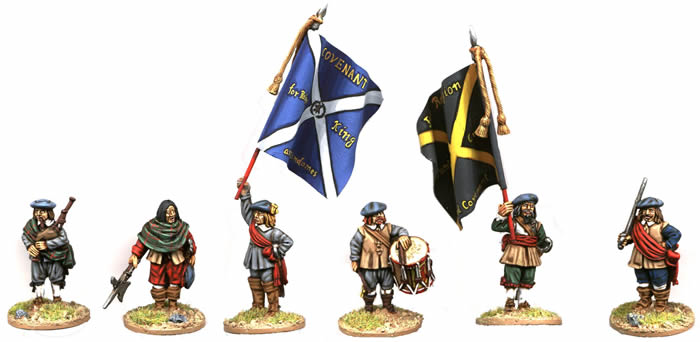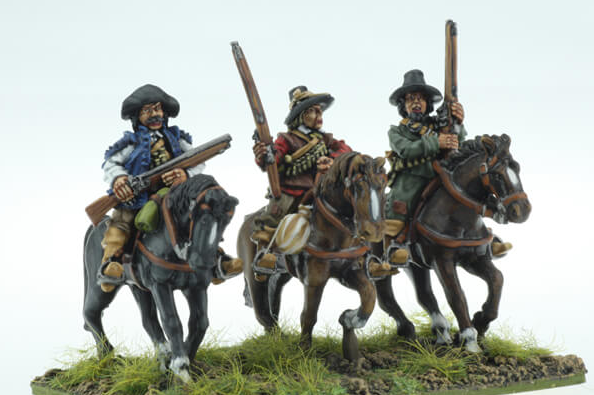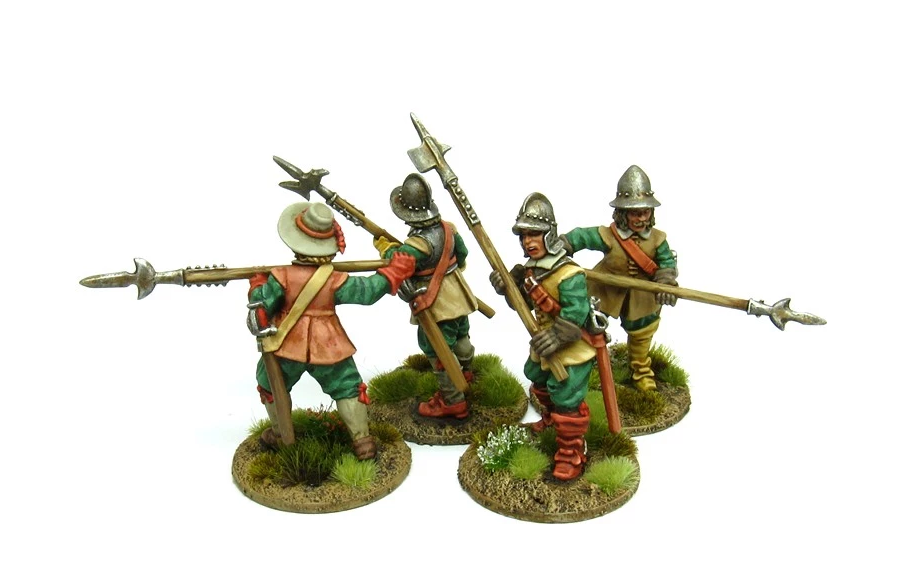Goonhammer Historicals is our series looking at the incredibly diverse world of historical wargaming – different scales, different eras, different rulesets. Today in Goonhammer Historicals we look at getting started with gaming in the English Civil War.
The English Civil War(s) are a fantastically popular choice for historicals wargaming, and with a range of scales, systems and models there’s something for everyone in those strange, bloody years when the world turned upside-down. Despite being one of the shorter “core” periods of historical wargaming, it’s a background that just gets weirder, more quotable and more interesting the more you dive into it, a time of Pikemen, Muskets, and Political radicals. Of Levellers, Diggers and Ranters, dandies, fops and long luscious hair. Cuckold jokes, cunning schemes and push of pike decided battles between Men of blood, Puritan Ironsides and Screaming Highlanders. On the tabletop ECW armies are a beautiful sight – all fluttering pennants and comedy flags, dense and threatening blocks of pike smashing together while cavalry slug it out in whirling, chaotic skirmishes for the high ground. It’s a great wargaming period with a strong rock-paper-scissors ethos: cavalry kill shot, shot kill pike, pike kill cavalry and cannons explode.

Historical Highlights
Aha! I tricked you into this with the English Civil War title, but what we’re talking about is more properly called the Wars of Three Kingdoms. From the 1630s through to 1660, a combination of terrible leadership, a weak King, a rising middle class and the whole gestures vaguely at the 17th century protestant versus catholic versus other kind of protestant thing, England, Scotland and Ireland (and Wales) were torn apart by a series of rebellions, invasions, civil wars and more minor regional conflicts. In 1638 three independent nations all nominally ruled to some degree by King Charles, were rumbling with dissent. By 1653 England stood supreme over a bloodied empire ruled under the grip of a “Lord Protector”, Oliver Cromwell.
The whole thing is regarded, quite rightly, as the little sibling of the far larger, insanely destructive and much more important 30 Years War, but seeing as Nottingham was where the ECW started, and it’s where modern wargaming arguably lives, you’ll see more ECW than 30 years war on tables all over the place. For wargaming all that means there’s a couple of key points you’re likely to see on the table.
The Bishops’ Wars 1639-40
Things kick off up in Scotland, where Protestant dissidents formed the “National Covenant” to defend the Scottish Church from the reforms imposed by the King. Charles decides to quash the rebellion using his own petty cash, and plans an incredibly overcomplicated invasion of Scotland using – gasp – catholic mercenaries. It’s the time of the famous Border Reivers, English and Scottish raiders robbing the rich and also robbing the poor, so there’s a thousand tiny skirmishes to fight out around fortified barns and border castles. In 1640 the feinting and friction escalated after a short fragile peace, and a Scottish army invaded England, kicked the shit out of the incompetent English militia at Newburn and occupied key northern towns. Charles pays them off at a fairly crippling rate, going cap in hand to the English Parliament, leading eventually to…..
The English Civil Wars
Between 1642 and 1651, three short wars were fought between King and Parliament. Initially both sides are hastily mobilised militia sprinkled with the occasional professional soldier with experience under Swedish or German command. The north and west sides with the king, the south and east with parliament. Everyone bumblefucks around not really knowing what they’re doing, or where the enemy is, or what the plan is. There’s so much bumblefucking that the first major battles are either considered a victory by both sides (Edgehill) or a standoff and everyone goes home (Turnham Green). There’s bizarre and well documented characters aplenty, from dashing foppish cavalrymen like Prince Rupert of the Rhine, and action hero hardcore bastards like Alexander Leslie.
By 1645 though the stalemate starts to break when Parliament stop clowning around and reorganise into a professional fighting force under Thomas Fairfax and Oliver Cromwell. The New Modelled Army becomes the template – and the hammer – that Parliament uses to liberally club Royalist forces up and down the country. They force the first war to a conclusion a year later after a 90 point victory at Naseby, shattering the Royalists and parading the King’s baggage through the streets of London. At this point, if he’d had any sense at all Charles would have realised he was beaten. Instead, by constantly attempting to raise more armies, more money and more trouble, leading to the second Civil War, he is a solid historical example of fuck around and find out when he’s executed for treason in 1649.

The Third English Civil war sees victorious Parliament rampaging around the Isles, fighting Irish forces allied to the diminished Royalist cause, back up to Scotland to fight the once-allied Covenanters and the scattered remnants of Royalists in England.
This “main bit” of the Three Kingdoms war has 20,000 man battles, but it also has a thousand tiny sieges, bridge crossings, castle defences, skirmishes and all sorts of political and social weirdness. While it started off fairly gentlemanly it devolved into a no holds barred atrocity, nowhere more so than…
Ireland
Of all the three Kingdoms, Ireland suffers most, and longest, in the “Eleven years war”. A Catholic uprising in 1641 developed into a widespread ethnic and religious conflict that, in turn, led to 11 years of atrocities, ethnic cleansing and English invasion. While no one is (hopefully) going to be attempting to replay Cromwell’s massacres at Drogheda and Wexford, the Confederates war of 1642-48 is a great source of wargaming content for clubs and campaigns that can treat ongoing sectarian tension respectfully. Over the course of 6 chaotic years there were English, Scottish and Irish armies fighting massed battles, attempting amphibious landings, guerrilla warfare, desperate sieges and diplomatic skulduggery aplenty.

Gaming the Three Kingdoms
For a twenty year sideshow to the much more exciting/harrowing stuff happening on the continent, the massive dominance of British companies in wargaming has given us thousands of ways to play in the period. Most rule sets deal with mass battles, huge blocks of pike and shot at a smaller scale, but others focus much more on smaller skirmishes. The big three round my way are:
Pike and Shotte
Pike and Shotte is Warlord Games’ approach to the 17th century. First released in 2012, it’s in the classic style of warlord’s non-bolt action historicals like Hail Caesar and Black Powder. Big blocks, fun first. It’s not the quickest system, especially when you’re up into the hundreds and hundreds of models, but it works well with a couple of large blocks of the titular pike and shotte on either side and captures the sheer momentum of a big square of guys with very long sticks. Expansions cover various 17th century wars in further detail. You can pike up Pike and Shotte from Warlord.
Pikeman’s Lament
If there’s a period of history, Osprey have a ruleset for it. Pikeman’s Lament is faster and on the smaller scale of the mass battle scale, with 6 units of 6-12 men being the norm. There’s an inbuilt campaign system tied to your core officer, and an interesting push-your-luck system for unit activations. I like Lament a lot, and it really lets you get into the smaller-but-not-a-skirmish battle space that was the most common action of the period. Games are quick, rules are clear, crunch is light and thematic. Find it on the Osprey site.
En Garde!
En-garde is another Osprey game, but this one on proper skirmish level in the 16th-18th centuries. Raiding gunpowder stores, assassinations, stealing the King’s silver out of oxford or smuggling operations are all very doable. You’re looking at around 10 models per side, usually single model activations and a wide tactical depth supported by the combat chit system. Well worth a look, especially if you’re integrating it into a campaign of a mass battle system.
Mustering your Pike
Sticking just to 28mm scale, there’s a massive range of metal minis for the period, with plastic options lagging a little further behind other periods. One of the nice things is that unless you go very specific with your modelling and painting, virtually every model can be used in any of the combatant armies. Irish and Scottish units tend to have their own aesthetic, but for the Royalists and Parliamentarians, paint and flags are the major defining features.
Warlord Games

Warlord have a plethora of metal and plastic sets for the English Civil war, with a great starter box set and a solid range. They’re typically Warlord in terms of scale, so be prepared for them to sometimes be a little more on the heroic side. One of the only sources for plastic 28mm ECW, if you’re doing larger armies there is only one wallet-safe option and that’s the warlord pike and shot sprue. You will, 100% get used to that one guy’s face. Once you’ve painted a couple you’ll remember this article. You’ll know that one guy’s face and say “ah yes Lenoon, you were right, that one guy does have a face”. There’s a good selection of supporting minis – wagons, clubmen, priests – as well as affordable starter and expansion sets.
Perry Miniatures

If Perry don’t make it, why are you playing it has been my historical motto for a while. As you’d expect from the sculpting masters, extremely high quality, well researched and everything you really need in the range. A good, solid range with lots of variation, especially for Dragoons, and trust me, you’re going to want dragoons. There’s not a lot you could want in the period that Perry don’t make, and the only big gap in the range is specific characters. For your Cromwells, Fairfaxes, Prince Ruperts and Charles Stuarts, go elsewhere, but for everything else there’s Perry miniatures. Sprinkle Perry liberally into Warlord plastics and you’ll have a beautiful force in no time.
Bicorne Miniatures

Bicorne’s ECW sets are crisp, detailed and generally lovely. The real strength here is in the variety of poses. Looking at musketeers alone you have 22 packs of eight men in every single combination of armour and pose you could want. Helmets, loading, firelocks? Yep. Clubbing, soft hats, muskets? Yep. Oxford (King’s army) crouching, caps? Yep. Getting your poses right (and varied) makes your units look incredibly beautiful – here’s the firing unit, the marching unit, the unit at rest. Balm to the eyes. A lovely set of famous characters and generals are all worth a look too.
Bloody Miniatures

Made initially to support Bicorne with some more niche offerings like a folorn hope or hardened veterans, Bloody Miniatures is a “small but perfectly formed range” for the ECW. Here you’ll find crisp detail and skirmishing poses that bring huge character to otherwise uniform pike blocks. Awesome Mordheim style minis should find a place in every collection if you’re playing skirmish or want to have a unit of certifiable hard bastards.
Wargames Foundry

Wargames Foundry do classic sculpts in great variety at a great cost, making them a solid part of the historical repertoire. While some of the sculpts show their age a little, every miniature oozes character. Wargames do some fantastic Scottish miniatures as well, so if you’re going north of the border they’re a strong recommend.
Where to start
There’s only really one starter set, and that’s Warlord:
For King and Country – Warlord Games starter (£78)
Core Pike and Shotte Rulebook
12-man firelock storming party
58 pike and musket
12 Cavalry
If you want to go rules-agnostic, or play something other than Pike and Shotte, you might want to go for the Pike and Shotte starter battalia set, which gives you double the cavalry and 80 pike and muskets, which ends up as a pretty good buy for only an additional £8. Either one will give you a solid core of plastic to build from, and an army you could variously use as Royalist, Parliamentarian or Scottish. With some dice, terrain and an opponent, you can dive right into larger battles.
From there, you can look at adding variety from other manufacturers, or expand with some artillery, different cavalry or dragoons. Unit type variety in the ECW isn’t massive, so two-three sets of minis of your choice from Perry, Bicorne or Wargames Foundry will give you enough men, and enough variety, for a solid mass battle army. If you want to go cheap Scottish or Irish, putting the front ranks into bonnets or caps and adding in a few bekilted soldiers goes a long way! For Skirmish games, a pack of command, dragoons or any of the Bloody Miniatures lot will kit you out with enough exciting poses and strange personalities to get going.
In the Name of God, Go!
That’s about it for a whistle-stop tour of gaming in the turbulent Three Kingdoms at 28mm. For more esoteric, more background and the ultimate guide to painting a plain russet coated captain who knows what he fights for and loves what he knows, and an explanation of why “come out ye cuckold” was, and remains, the sickest wartime burn, stay tuned.
Have any questions or feedback? Drop us a note in the comments below or email us at contact@goonhammer.com.


